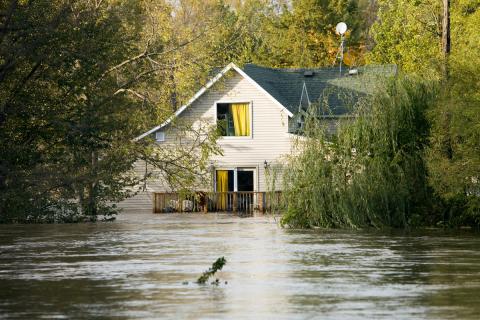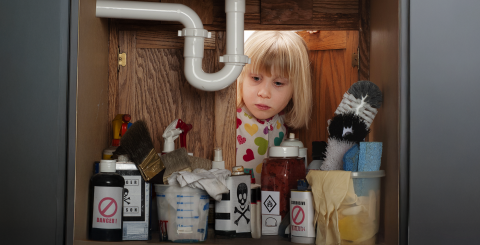Insurance risk assessment: How does it work?

Damage insurance and the language used to talk about it can seem pretty complicated. But insurance is part of life, so, whether you’re a homeowner, tenant, or driver, you need insurance coverage for your own peace of mind as well as for legal and contractual reasons. We all know that accidents and other unforeseen events happen, and property gets damaged.
A question we’re often asked is: How does risk assessment work for insurers? Why can a risk assessment sometimes make it hard to find an insurer or lead to you being turned down? When an insurer offers you coverage, how do they decide what the price will be? These are all important and legitimate questions. We’ll try to answer them as simply as possible and in a logical order to clear all the confusion away.
RISK IN INSURANCE: BASIC PRINCIPLES
Let’s start with the broad principles underlying all insurance. When all is said and done, insurance is a way of managing financial risk. The notion of risk is very broad and can apply to lots of things, but for insurers it’s mainly defined as the probability that an unforeseeable and quantifiable event will occur and cause damage.
When you take out insurance, you pay a premium to an insurer who in exchange will pay you compensation under the terms of a policy for damage caused by a covered loss. Damage insurance typically covers your property and liability to third-parties. And the whole process starts with a risk assessment by insurers.
Why do insurers ask so many questions?
Sure, insurers ask a lot of questions, because that’s what it takes to assess insurance risk properly. The answers you give are used by insurers to understand your needs and circumstances. To decide whether they have the right coverage for you, they look at a set of factors.
Many things can tend to increase or reduce the likelihood of a loss. Insurers all have their own standards for underwriting and determining rates, which are derived from the particular analyses and statistics they have available. These examples may help clear things up:
- Did you know that car insurance, on the average, is more expensive in big cities? It’s not really that surprising once you know the statistics on auto theft and damage, which show that the risk of both things is higher in large urban areas. There are also lists of the most commonly stolen models of vehicles in the province. So if you live in Montreal and are thinking of buying a car that’s on those lists, it helps to know how the data will affect your car insurance.
- Your credit score is also used by insurers in the assessment process. Why? Studies show that a person with a good credit score represents less of a risk for insurers. A person’s credit score is directly correlated to insurance risk and the likelihood of their making an insurance claim.
- With home insurance, location is a big factor for insurers. Crime (such as theft or vandalism) and fire rate data is available by area or neighbourhood as is distance from a fire hall, soil types, and more. One insurer might decide not to cover a given area or territory, while another goes ahead. When there’s iron ochre, pyrite, or pyrrhotite in the ground, it’s difficult to insure there because insurers can predict the damage.
- The numbers tell us that there has been an increase in traffic accidents, due to things like driver distraction, and that vehicle repair costs are skyrocketing, due to the cost of new technology. Most insurers have responded by increasing car insurance premiums.
That’s an example that shows how important it is for insurers to find the right balance between what they collect in premiums and what they pay out in claims if they want to keep offering insurance coverage at a reasonable price. Insurers’ risk assessment processes also incorporate factors specific to each individual case.
But insurance goes beyond just managing individual risk, it’s also about sharing risk, which is why insurers need to watch for fraud, decline suspicious risks, avoid foreseeable losses, and emphasize prevention. Being careful is good for everyone.
Every case is unique, of course. Your situation and reality aren’t the same as everyone else’s. When you deal with insurers for car or home insurance, they should adjust their assessment to match your account, the coverage you want, and the information you give them. Even though that part might seem to be more subjective, it’s still based on objective criteria and indicators.
The last step of the process is where an insurer decides to accept or decline a risk. If they accept, they have to set your premiums too. Let’s take a closer look to help you get more of a feel for it.
WHY WOULD SOMEONE BE DECLINED INSURANCE?
Suppose you have trouble getting insured or know someone who does. Well, if you have a record of not paying or have filed a lot of damage claims in recent years, you could have a hard time getting anyone to sell you insurance, either for your car or your home. Non-payment of premiums, frequent claims, and prior cancellations are a few of the common reasons for insurers to decline applications for insurance, specific types of coverage, or policy renewals.
Other red flags for insurers are shaky finances—a recent bankruptcy for instance—or a judicial record, especially if related to fraud, which is unfortunately all too common and has a knock-on impact for everyone who has insurance and the entire insurance industry.
The reasons for declining a home insurance application may be linked to some of the following issues:
- Age of the building, renovations, and general maintenance of the property
- Location or area
- Types of pets and what they do
- Professional or agricultural use of the home
Car insurance may be declined for some of the following reasons::
- Driver age, experience, or driving record
- Driver’s licence suspension
- High theft risk of the vehicle make and model
- Vehicle modifications affecting performance
What can you do if you’re declined for insurance?
All is not lost—support and solutions are available. The Insurance Bureau of Canada (IBC) has free support services for people who have trouble insuring their car or home. Here we should distinguish between mandatory and optional insurance.
Where car insurance is concerned, the Automobile Insurance Act requires every vehicle owner to carry third-party liability insurance for at least $50,000 ($500,000 for off-road vehicles.) That’s why it also guarantees you can get that minimum mandatory coverage. For optional coverage, there are insurers who specialize in applicants who are declined by standard insurers. The principle is the same for home insurance, which isn’t mandatory, although mortgage lenders often require it.
To be eligible for help from IBC’s Insurance Information Centre, you need to have been declined by five insurers. Bear in mind that an insurer might reject an application under its own standards that another would have no problem with. Each insurer selects risks according to its own circumstances and bottom line. It’s always smart to shop around for insurance anyway.
HOW ARE PREMIUMS SET?
The logical next step, once insurers agree to cover risk, is to set premiums and provide a quote. What might affect the cost of car insurance? Or home insurance? As we discussed earlier, the endless questions insurers ask help them assess risk.
Car insurance
There are four big factors that affect car insurance premiums: your own circumstances, your driving experience, your vehicle, and the coverage you want. There are certain specifics too, like
- Driver’s or drivers’ age
- Main location of the vehicle
- Whether it’s used for business or personal reasons
- Credit rating
- Driving and vehicle claims record
- Car make and model
- Desired coverage
Knowing what they’re looking at gives you some room to manoeuvre to get a better rate while still walking away with the coverage you need. Of course it’s tough to do much about car theft rates in your area, but you do get to pick which car you buy. You can also do things to foil thieves, like installing anti-theft devices, and get a discount.
Home insurance
For home insurance, insurers mainly look at the following:
- The building (age, size, location, heating system, construction materials, rebuilding cost, etc.)
- The fire protection system
- The value of property to insure
- The policy and coverage
The things we’ve already talked about, like loss experience, crime and fire rates all figure into setting your premiums. The deductible on your car and home insurance policy is another thing you can adjust to influence your premiums. Generally, each insurer has a standard fee schedule. However, when a particular risk doesn’t fit the schedule, insurers, rather than decline to cover it, may adjust a few things and agree to give you a quote.
There you go! We hope you have a clearer idea now about how insurance risk assessment works, why some insurance risks are declined, and how prices are set for risks that are accepted. But since there are so many factors and every case is different, it’s important to know the main principles and be ready to ask your damage insurance representative whenever you encounter something you’re not sure about.




